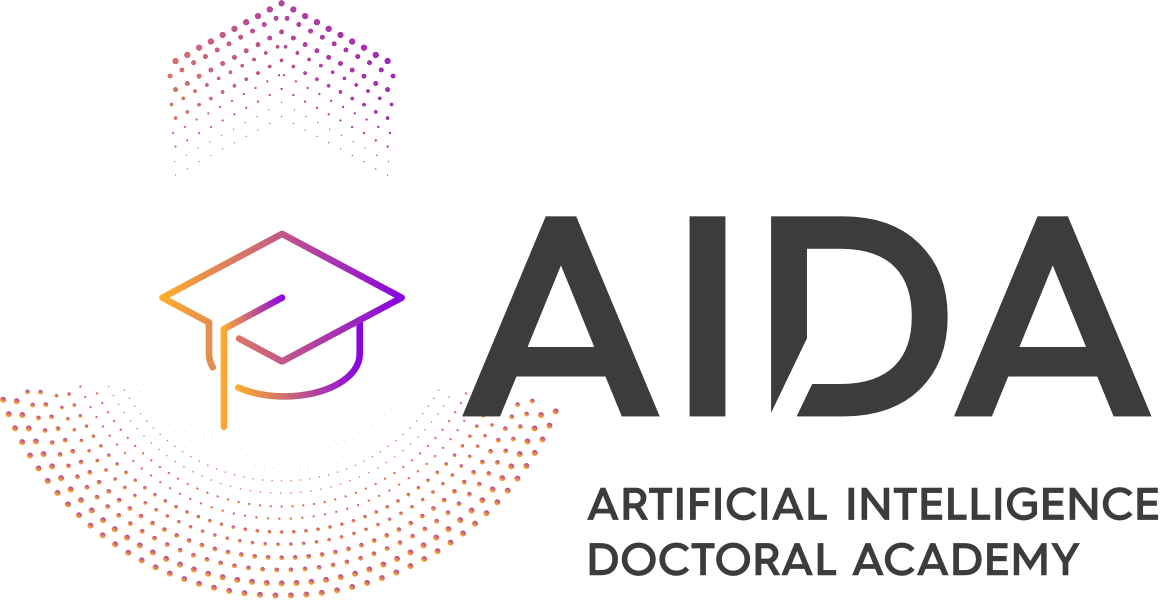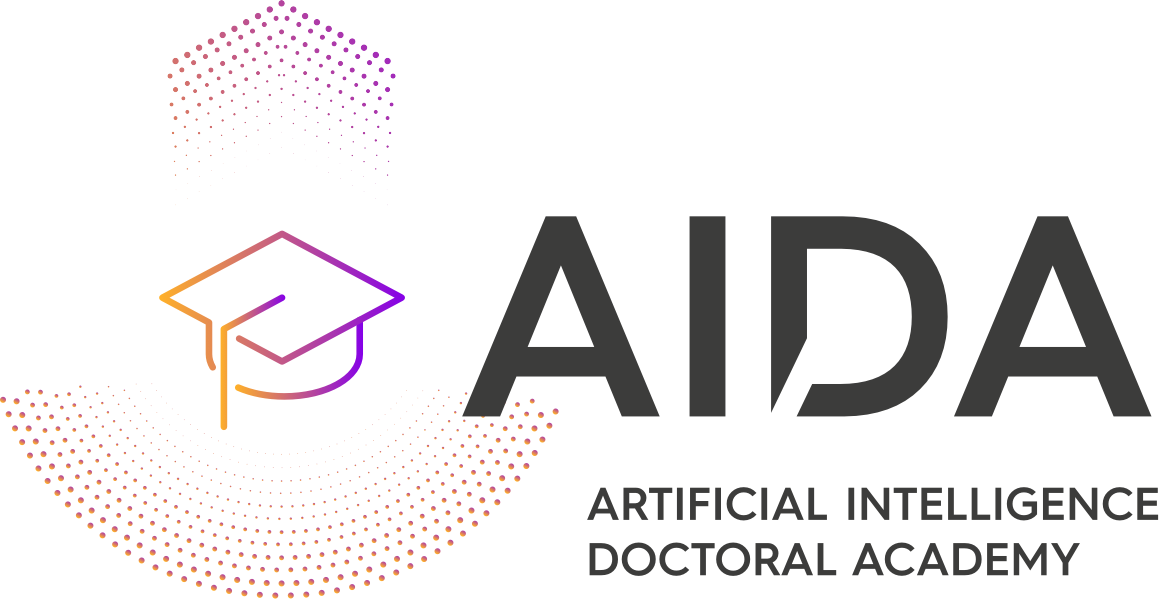AI Educational Taxonomy
Our Taxonomy serves as an entry point to well-organized and easily accessible educational resources in the field of Artificial Intelligence (AI), continuously refined, to ensure it accurately captures its diverse, interdisciplinary, and evolving nature.
The core innovation of our initiative lies in the creation of a hierarchical taxonomy, a structured classification system that enables the categorization and tagging of educational materials.
This taxonomy is designed to reflect the commonalities and thematic elements present in AI-related content, allowing for precise indexing, retrieval, and curation of resources.
Its development involved a rigorous analysis of educational materials, expert input, and iterative refinement, allowing for the inclusion of emerging topics that are relevant to the curriculum, and ensuring that students are equipped with the most relevant knowledge and skills.
The taxonomy is divided in two main areas: AI Core Modules and AI Special Topic Pillars. The AI Core Modules incorporates 7 topics: Foundations of AI; AI Paradigms and Representations; Deciding and Learning How to Act; Machine Learning; Computer Vision; Natural Language Processing and Analysis; AI Ethics and Governance. As for the AI Special Topic Pillars, it includes 4 categories: AI for Media, Society and Democracy; Integrating Approaches for Trustworthy AI; Data-Driven Learning and Human-Centric AI.
Discover the full taxonomy below.
AI Core Modules
- Foundations of AI
- Definitions and History of AI
- Symbolic and Subsymbolic AI
- Data-driven AI
- Intelligent/rational agents
- Reasoning algorithms
- AI Paradigms and Representations
- Knowledge representation
- Description logics and ontologies
- Semantic networks
- Knowledge Graphs
- Search algorithms
- Optimization and metaheuristics
- Constraint satisfaction
- Deciding and Learning How to Act
- Logic and inference
- Model-based reasoning
- Expert systems
- Case-based reasoning
- Probabilistic description logics
- Default reasoning and belief revision
- Probabilistic/fuzzy logic and programming
- Decision theory and Markov Decision Processes
- Multi-agent Decision Making (ZAR)
- Logic and answer set programming
- Statistical relational learning
- Bayesian networks
- Bayesian filtering
- Automated planning
- Sequential decision making
- Machine Learning
- Basics
- Statistical foundations of machine learning
- Optimization for machine learning
- Model validation and selection
- Feature extraction and selection
- Overfitting and regularization
- Learning paradigms and settings
- Supervised learning
- Semi-supervised learning
- Unsupervised learning
- Cluster analysis
- Dimensionality reduction
- Active learning
- Cost-sensitive learning
- Manifold learning
- Anomaly detection
- Reinforcement learning
- Imitation and apprenticeship learning
- Multi-agent reinforcement learning
- Learning to rank
- Density estimation
- Topic modeling
- Adversarial learning
- Multi-task learning
- Transfer learning
- Domain adaptation
- Batch learning
- On-line learning
- Lifelong machine learning
- Federated learning
- Machine learning approaches
- Linear models for regression
- Linear models for classification
- Naive Bayes classifiers
- Non-parametric classifiers
- Clustering
- Gaussian Mixture Models
- Spectral methods
- Dimensionality reduction methods
- Neural networks
- Support Vector Machines
- Kernel machines
- Probabilistic graphical models
- Logical and relational learning
- Factorization methods
- Rule learning
- Representation learning
- Basics
- Computer Vision
- Image acquisition and formation
- Image representation
- Shape representation
- 2D image registration
- Edge detection and feature extraction
- Feature matching
- Image segmentation and saliency detection
- Video capture and formats
- Video segmentation
- Camera calibration
- Projective and epipolar geometry
- Stereoscopic, 3D and multi-view imaging
- Depth and shape inference
- 3D reconstruction and Structure-from-Motion
- Visual Simultaneous Localization and Mapping
- Active vision
- Object recognition
- Biometric recognition
- Scene understanding
- Activity recognition and understanding
- Object detection
- Object tracking
- Semantic and instance segmentation
- Image/video captioning
- Video summarization
- Visual content-based indexing and retrieval
- Scene anomaly detection
- Computational photography
- Hyperspectral imaging
- Natural Language Processing and Analysis
- Information extraction
- Discourse, dialogue and pragmatics
- Lexical semantics
- Phonology / morphology
- Language resources
- Machine translation
- Text representation and word embeddings
- Natural language generation
- Large language models
- Text summarization
- Text classification
- Text mining
- AI Ethics and Governance
- Fundamentals of AI Ethics & Responsible AI
- AI Ethics overview
- What is Trustworthy AI
- Trustworthy AI principles
- Trustworthy AI principles in Europe
- What is Responsible AI
- The value alignment problem
- AI Legal perspectives
- AI Legal perspectives across the world
- Relevant Legal Frameworks in Europe
- Data Act
- Digital Services Act
- AI Liability Directive
- AI Act
- Governing AI: current AI policy initiatives worldwide
- National Level – AI Governance
- Global AI policy initiatives
- EU AI policy initiatives
- The role of civil society
- Corporate Level – AI Governance
- Global perspectives
- EU perspectives
- National Level – AI Governance
- Applying AI Ethics and Assessment frameworks
- AI Ethics Assessment frameworks overview
- The Assessment List for Trustworthy AI (ALTAI Tool, HLEG)
- AI Governance
- Models for sustainable data governance
- Fundamentals of AI Ethics & Responsible AI
AI Special Topic Pillars
- AI for Media, Society and Democracy
- Music/Sound Analysis and Synthesis
- Audio source separation
- Acoustic scene classification
- Sound event detection
- Acoustic anomaly detection
- Music tagging
- Music transcription, indexing and retrieval
- Music synthesis
- Music similarity estimation
- Music tempo estimation
- Musical instrument recognition
- Music genre recognition
- Speech recognition
- Speech synthesis
- AI and Game Media
- Procedural game content generation
- AI-assisted game design (AIAD)
- Game analytics/data mining
- Game player modeling
- Gameplay enhancement
- AI-enhanced game graphics
- Game content personalization
- Game testing
- Web and Social Media Analysis/Mining
- Complex network analysis
- Link analysis and prediction
- Random graph models
- Community detection
- Node classification
- Network information diffusion
- Graph signal processing
- Recommender systems
- Ranking-based information retrieval
- Semantic Web
- Blockchain algorithms
- Blockchain technology and applications
- Human-Centered Media Analysis
- Emotion analysis
- Facial feature detection
- Face detection
- Face and object de-detection
- Face recognition
- Face clustering
- Face de-identification for privacy protection
- Facial expression recognition
- Speech segmentation
- Speaker recognition
- Visual speech recognition
- Speech emotion recognition
- Text affect detection
- Physiological monitoring
- Body/hand gesture recognition
- Crowd detection and analysis
- Human body posture and pose estimation
- Human action recognition
- Athlete motion analysis
- Music/Sound Analysis and Synthesis
- Integrating Approaches for Trustworthy AI
- Foundations of Trustworthy AI
- AI explainability
- AI safety
- AI fairness
- Accountability and reproducibility
- Privacy
- Sustainability
- Reasoning and Learning in Social Contexts
- Social cognition modeling
- Collaboration and teamwork modeling
- Cooperation between agents
- Learning from others
- Emergent behaviour
- Agent societies and social networks
- Automated AI
- Automated algorithm configuration
- Automated algorithm selection
- Automated performance prediction
- Model selection
- Hyperparameter optimization
- Neural architecture search
- Foundations of Trustworthy AI
- Data-Driven Learning
- Deep learning
- Artificial Neural Networks, Perceptrons
- Multilayer Perceptrons
- Convolutional Neural Networks
- Deep Autoencoders
- Graph Neural Networks
- Recurrent Neural Networks
- Attention and Transformer networks
- Neurosymbolic AI
- Machine Learning Theory
- Statistics
- Probability
- Game theory
- Numerical analysis
- Analysis of algorithms
- Reinforcement learning and Sequential Decision-making
- Online learning
- Online learning algorithms
- Bandits
- Action-Value methods
- Gradient Bandit methods
- Model-based RL
- Given the model
- Learning the model
- Model-free RL
- Q-learning
- Policy optimization
- Deep Reinforcement Learning
- Online learning
- Distributed and Federated learning
- Multi-Agent Systems
- Agent-oriented software engineering
- Distributed problem solving and planning
- Search algorithms for agents
- Cooperation and coordination of agents
- Multi-agent learning
- Agent negotiation
- Beliefs, desires, and intention (BDI)
- Agent negotiation and cooperation
- Distributed constraint optimization (DCOPs)
- Applications of multi-agent systems
- Distributed and Federated learning
- Distributed ensemble learning
- Mobile Edge AI
- Distributed deep learning
- Resource management and scheduling in federated learning
- Communication network optimization in federated learning
- Energy Efficiency in federated learning
- Ultra-light DNN architectures in federated learning
- Applications of federated learning
- Privacy in federated learning
- Reliability in federated learning
- Resource heterogeneity in federated learning
- Multi-Agent Systems
- Generative Artificial Intelligence
- Variational Autoencoders
- Generative Adversarial Networks
- Diffusion Models
- Image/video generation
- Text/code generation
- Prompting
- Generative AI applications
- Deep learning
- Human-Centric AI
- Human-centered Machine Learning
- Interactive machine learning/Learning from human feedback
- Understand human teaching strategies
- Argumentation
- Social simulation
- Multimodal Perception and Modeling
- Common Ground
- Embodiment
- Multimodal communication
- Cognitive Architecture
- Human-AI Interaction and Collaboration
- Shared mental models
- Theory of Mind
- Human-AI Communication
- Human-Robot Interaction
- Verbal Communication
- Non-verbal Communication
- Common Ground
- Cooperation
- Dialog Systems
- Pragmatics
- Human-Aware Planning
- Chatbots
- Social robots
- Social Awareness
- Critical Study
- Participatory Design
- Social Cues
- Hybrid Human-AI
- Artificial Social Intelligence
- Norms
- Explainable AI
- Interpretability and transparency
- Explanations in social sciences literature
- Local and global explanation methods
- Interpretable models
- Post-hoc explanations
- Explainability in embodied and non-embodied AI systems
- Causality and interactivity
- Human-centered Machine Learning


